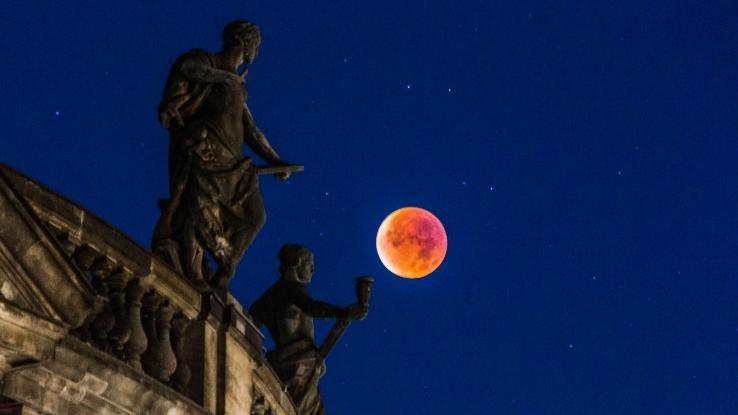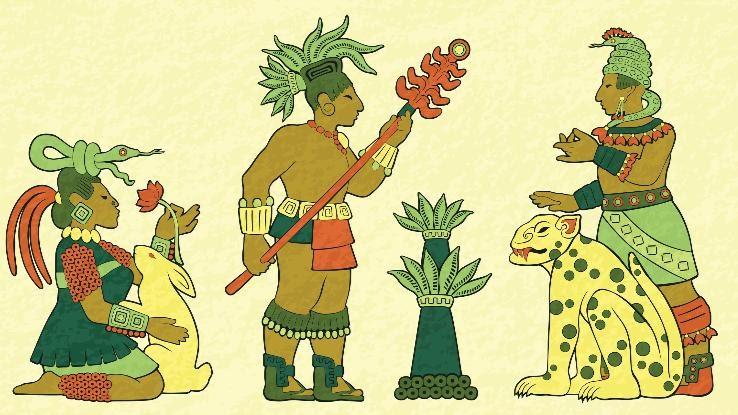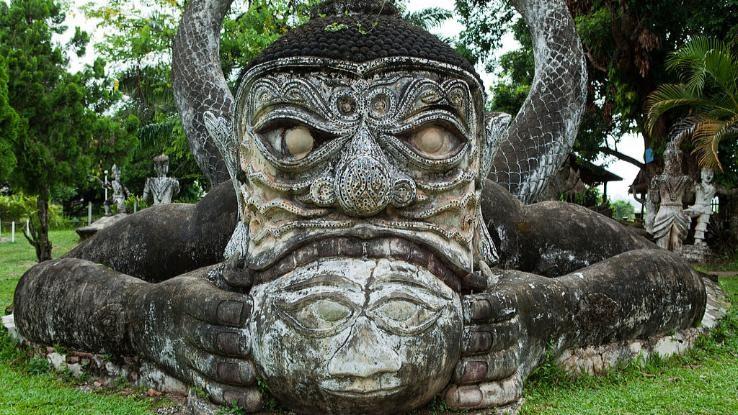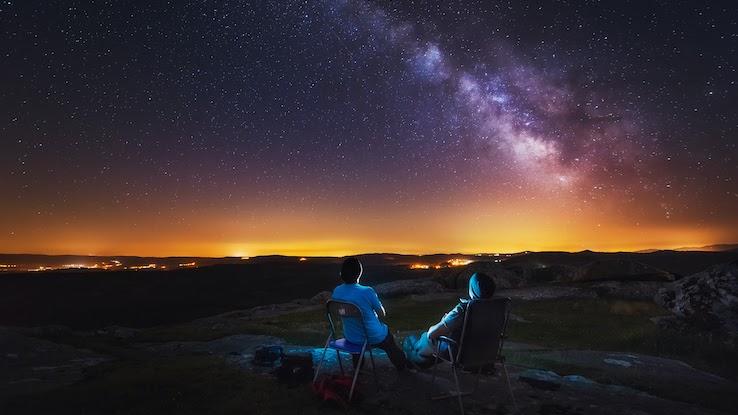Theres a Blue Moon Over My World Without You Lyrics

Grab some blankets and hope for clear skies — May 15-16th of 2022 marks the date of the next total lunar eclipse, and this one will last almost a full hour and a half. If you've never seen a lunar eclipse before, it's an exciting prospect…to those of us living in modern times at least. While many intrepid stargazers nowadays relish the opportunity to view one of these astronomical events, ancient cultures didn't always look upon them too fondly.
Today we know today that a lunar eclipse happens when the Earth moves into a position directly between the moon and the sun, which causes the sun's light to cast Earth's shadow over the moon's surface, darkening the moon in the process. But to ancient cultures, the sight of a lunar eclipse was far more alarming — and often resulted in the creation of unique legends to explain what was going on in the sky. As you're prepping for this year's event, check out some of the myths that sprang up as various groups sought to unravel the meaning of lunar eclipses throughout history.
When Lurking Jaguars and Hangry Pets Attack
For ancient populations that counted on the predictable patterns of the night sky to provide their lives with structure, the appearance of a lunar eclipse was nothing to be taken lightly. During an eclipse, the moon tends to turn an eerie shade of red, leading to the popular term "blood moon." As a result, different cultures used colorful myths to explain what was going on with the moon during lunar eclipses.

The Incas, for instance, placed the blame squarely on a giant solar jaguar that was believed to attack the moon and cause it to bleed, creating its sinister scarlet glow. Luckily for the moon, the Incas had its back. Whenever the jaguar attacked, they shook spears at the moon, encouraged their dogs to bark and made as much noise as possible in order to drive the jaguar away before it started directing its hostility toward Earth.
To the Hupa Native American tribe of California, the moon held a bit more blame for the situation. According to Hupa legends, the moon had many exotic pets and wives, and it was responsible for taking care of them all by providing sustenance. Whenever it failed to adequately feed its pets (many of which were snakes and mountain lions) the animals attacked and caused the moon to bleed — again, explaining the red coloration during an eclipse. Eventually, after allowing the animals to exact a bit of punishment, the moon's wives stepped in and put a stop to the carnage before nursing the moon back to health.
Hindus have a myth from a text called the Mahabharata that identifies a demon named Rahu as the culprit behind both solar and lunar eclipses. According to the tale, the situation began long ago when the gods recruited a group of demons to help them brew an elixir of immortality.

The deal they made was that, in exchange for the demons' help, the gods would share the elixir when it was done. The sun and moon were just a few of the byproducts of the elixir's creation process, which was ultimately a success. But when the time came to give the demons their share, the god Vishnu decided to unleash a few tricks first.
Disguising himself as a woman, Vishnu seduced the demons and stole their doses of the elixir. A demon called Rahu, however, decided he wouldn't allow himself to be outsmarted so easily. Rahu stole away into the gods' camp and managed to take a gulp of the elixir. Unfortunately, the sun and moon saw, and they tattled to Vishnu — who promptly cut off Rahu's head.
Given that he had already consumed the elixir, the beheaded Rahu didn't die. He vowed revenge on the sun and moon for squealing on him, and to this day he continually chases them both around the sky. Occasionally he manages to swallow one or the other, thus producing the effect of an eclipse. Fortunately for the sun and moon — and because Rahu is only a head — they're ultimately able to slip back out through his severed neck once he swallows.
Bad Moon on the Rise
Lunar eclipse predictions aren't limited to the superstitions of ancient populations — they've also cropped up even within the past decade. In 2014, an evangelical preacher named John Hagee attracted media attention when he announced that the end of the world was nigh due to what became known as the "Blood Moon Prophecies."

Hagee first introduced his theories in his 2013 book Four Blood Moons: Something Is About to Change. His predictions called upon several Biblical prophecies that point to lunar eclipses as signs of the end of times. Examples include:
- "The sun will turn into darkness, and the moon into blood before the great and terrible day of the Lord comes." – Joel 2:31 (NIV)
- "The sun will be turned to darkness and the moon to blood before the coming of the great and glorious day of the Lord." –Acts 2:20 (NIV)
- "I watched as he opened the sixth seal. There was a great earthquake. The sun turned black like sackcloth made of goat hair, the whole moon turned blood red…" – Revelations 6:12 (NIV)
Hagee's theory revolved around a particular series of consecutive lunar eclipses that fell on dates throughout the period between April 2014 and September 2015. What made these particular eclipses notable, he argued, was the fact that they all fell on Jewish holidays. But despite solidifying his reputation for antisemitism, Hagee's warnings didn't go unnoticed, and many people took them seriously. His book shot to the No. 4 spot in the advice section of the New York Times best seller list, suggesting we're still not immune to the allure of a good moon-related conspiracy.
Here's How to View the Lunar Eclipse on May 15-16th
Ready to see this lunar event with your own eyes? The 85-minute eclipse can be seen in its entirety by folks in the Eastern United States and Canada, as well as anyone in South America. But even if you aren't in those areas you should still have some good viewing opportunities — as long as the clouds cooperate and make themselves scarce. Timeanddate.com has prepped a helpful guide, along with some companion maps and animations, detailing the when, where and how to best see the eclipse in action. But if you're not in the direct path of the lunar shadow (or have no plans to wake up early enough to spot it), fret not; the site also plans to livestream the event for skywatchers around the globe.

One of the beautiful things about these lunar eclipses is that you don't need much in the way of supplies to catch a glimpse of the moon in all its ruby-red glory. Unlike a solar eclipse, special glasses aren't necessary, and you won't even need binoculars or a telescope; however, these tools can give you a more up-close-and-personal view and help you better see the moon's color changes. If you don't mind adventuring a bit to enjoy the best visibility, you may want to head to a higher elevation — and to a spot that's open, like a field or pasture. You're less likely to encounter clouds there, and your view should remain relatively unobstructed.
Source: https://www.reference.com/world-view/lunar-eclipse-moon-myths-folklore?utm_content=params%3Ao%3D740005%26ad%3DdirN%26qo%3DserpIndex
0 Response to "Theres a Blue Moon Over My World Without You Lyrics"
Post a Comment